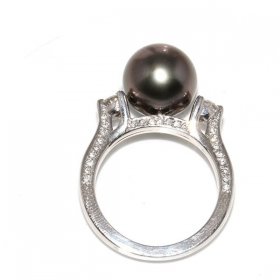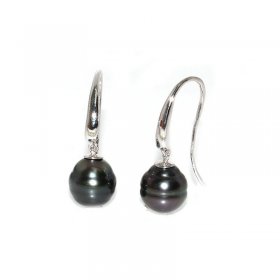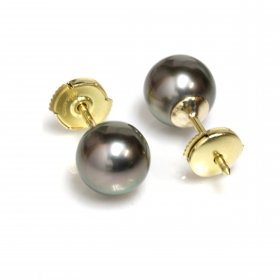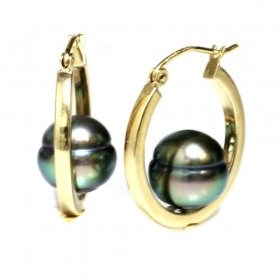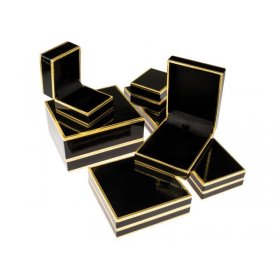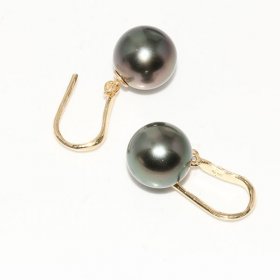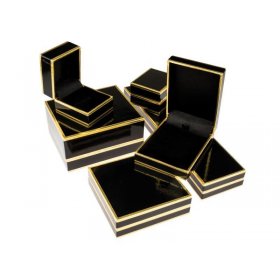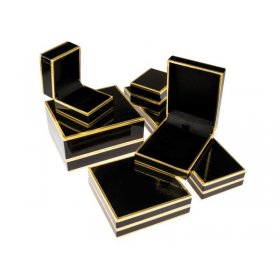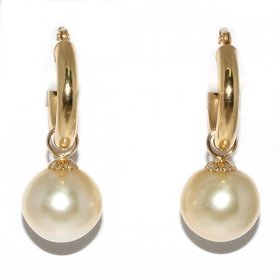
Tahitian, Australian, Akoya pearls jewelry, excellence made in USA
We are happy to welcome you into the enchanting world of the PearlAndGold.com shop. The objective of this website will reveal to you the original beauty and purity of our luxurious jewelry creations, made entirely with Tahitian pearls, Australian South Sea perls, Akoya Japanese pearls of AAA or AA quality.
The cultured pearls that we select for the design of your jewelry through our exclusive supply chain in the best pearl farms of French Polynesia and the world, allow us to obtain the most beautiful gems in black pearls, Japanese Akoka pearls(optimal grade called hanadama)or pearls of the seas of South Australia in order to provide you with cheap luxury jewelry of exceptional quality. Our carefully selected Tahitian pearl earrings are made up of thick layers of mother-of-pearl and have a very shiny luster at prices defying all competition. In order to preserve the know-how, elegance and originality of the product, each copy of our jewelry collection is entirely handmade by a craftsman jeweller in our workshop in the Los Angeles region, with 20 years of experience in this field.
The pearl of Tahiti is a pearl cultivated in the archipelago of French Polynesia, in Tahiti precisely. This pearl is one of the most famous pearls in the world because it has a rather rare quality and an unusual regularity. Indeed, an extraordinary proportion of pearls is sold in the pearl market. Very often only a fairly low percentage of pearls from a crop are sold at a very fair price. For the Tahitian pearl, it is a very large proportion of the pearls that are sold, a much higher than average proportion. In this sense, the pearl of Tahiti has an extraordinary regularity.
Although these Tahitian pearls are considered the most beautiful pearls in the world by the greatest specialists, these Tahitian pearls follow the same production process as all other cultured pearls. Here is a brief overview of the journey of a cultured pearl from its birth to its sale. This journey is very important to understand the different elements influencing the different characteristics of a pearl. Tahitian cultured pearls originate from the turquoise lagoons of French Polynesia, this idyllic archipelago in the southern Pacific Ocean. Born in the heart of Pinctada Margaritifera, a renowned pearl oyster, Tahitian cultured pearl comes in a variety of different shades and shapes. Thanks to a chandelier and a first-class orient, the Tahitian pearl is one of the most beautiful jewels in the world. The world's greatest jewellers particularly appreciate these prize-winning gems, which have, thanks to their infinite beauty, conquered the hearts of millions of women.
First, a cultured pearl is born in an oyster when a mother-of-pearl nucleus is inserted through an incision in a pearl. This mother-of-pearl nucleus often comes from very pure American rivers. Then the pearl will develop by the accumulation of a mother-of-pearl layer around the graft. This layer of mother-of-pearl is secreted by the oyster which wishes to protect itself from the intrusive element. Finally, after several months of waiting the pearl is finally removed from the oyster to be treated and cleaned. It is important to note that the oysters themselves are selected after several months of growth before receiving a transplant. The characteristics of the oyster are therefore very important in the quality and size of the pearl. For example, the larger an oyster, the more the pearl can grow and grow, but it will also be more likely not to grow by forming a perfect sphere.
Then once the pearl has been recovered, it will be cleaned for several hours in a rotating drum with as glossy nut chips. This operation is very long and very complex because the cleaning operator must spin the drum fast enough for the nut chips to shine enough in the mother-of-pearl without going too fast and damaging the mother-of-pearl in its form. It is very important to point out that Tahitian pearls do not undergo any other treatment unlike other pearls. That is, once a Tahitian pearl has been cleaned according to the process described, it is immediately estimated and then put up for sale or used for jewelry. So Tahitian pearls are really natural. The mother-of-pearl lust is obtained by a single natural wash by shavings of walnuts. Tahitian pearls are therefore exceptional because they are unquestionably the most beautiful pearls of cultivation but are obtained only by a natural process and without chemicals.
Qualifying a Tahitian pearl
The black pearls of Tahiti are derived from secretions of mother-of-pearl from a particular species of oyster called pinctada margaritifera, a species mainly grown in Polynesian lagoons. In the field of jewellery, Tahitian pearls are classified according to qualification standards, although sometimes trading companies establish their own rules and thus develop a particular interpretation of these standards.
At PearlAndGold.com, our Tahitian pearls follow the qualification standards based on the official graduation of the GIA in consultation with the government of Tahiti, relating to the pearl farms of Polynesia as well as the export of these pearls.
Important: The Tahitian beads we use to make rings, pendants and earrings are only rigorously selected. These are the best pearls from only 1% of Tahiti's pearl production. Therefore, these beads do have rare imperfections or surface defects, they are truly perfect (pearls quality gems, guaranteed by PearlAndGold.com).
Below is a table with the essential information for the characterization of pearls:
Example GIA:
GEMME - Round - Perfect - Brilliant
AAA - Round - Very slight imperfections - Very shiny
ABA - Round - Slight imperfections - Very bright
BAA - Semi-round round - Very slight imperfections - Very bright
AAB - Round - Very slight imperfections - Medium-to-medium
The 6 graduation factors of a Tahitian pearl
For an in-depth analysis, it is necessary to carefully observe 6 key factors to qualify a Tahitian pearl:
- Shape of the beads: Round, Semi-round, Semi-Baroque, Hooped, Baroque.
- Pearl size: 8mm to 21mm.
- Pearl surface: Perfect, Very slight imperfections, slight imperfections, moderate imperfections, heavy imperfections.
- Luster: Excellent, Very bright, brilliant, medium, soft.
- Thickness of the nacre: Very thick, thick, fine
- Color: Color of the body of the pearl, reflections, strokes.
The size of a Tahitian pearl
The size of the beads is expressed in millimetres. The majority of Tahitian pearls measure between 8mm and 14mm. Although rare, some of them can reach 16mm or even 18mm for larger ones. The largest tahitian pearl ever found reaches a diameter of 21mm. Pearls that reach this extraordinary size are considered exceptional gems (regardless of their color). The black pearls of Tahiti are classified between different sizes. Of course, the bigger a pearl, the more expensive it will be. Conversely, the smaller it is, the less valuable it will be. To measure the size of a pearl, its diameter is used. This ranges from a few millimeters to 21 millimetres for the largest pearl in the world. This pearl is a unique record, so its value is extremely high. In general, pearls measure 5 to 15 millimetres. The most expensive pearls available on the market are generally between 16 and 18 millimetres in diameter.
The shape of a Tahitian pearl
Technicians specializing in Tahitian pearls sort black beads into 5 shapes: Round, Semi-Round, Semi-Baroque, Cerclée, Baroque. (see also: Shape of cultured pearls). The Tahitian pearl has a shape classified into four distinct categories. A 2% variation on the diameter is tolerated in all forms.
The first shape is the round pearl. This pearl is the most sought after because it is the most perfect. It is implied by talking about round pearl that the variations in diameter are less than 2%. Although highly sought after these beads have no real point of distinction from others. They are just an expression of perfection. The beads should be as spherical as possible. The roundest pearls are called perfect and if these are also perfect in the other criteria then they are Top Gems, the most valued pearls in the world. The semi-round pearl also exists. This has variations in diameter ranging from 2 to 5% of the base diameter measured.
The second form of pearl is the baroque pearl. This pearl has no diameter. It is by no means round. Unlike the round pearl, which must be as spherical as possible, the baroque pearl can gain value if its shape makes sense. Some shapes, although irregular, may show something and thus see their value grow compared to other baroque pearls that are simply ugly. Just as there are semi-round beads, there are semi-baroque beads. They are irregular, but their irregularity is often found in nature. They are thus categorized into different categories, such as pear beads or drop beads. Finally, the beads can be circled, i.e. circles can be distinguished perpendicular to the axis of rotation.
- Round: Round Tahitian beads are practically spherical with a diameter variation of less than 2%. The round pearl is the most sought after and rarest of Tahitian cultured pearls. It is by definition the most expensive. The most beautiful beads are used to make rings and pendants. Then come the earrings and necklaces. To determine if a pearl is perfectly round, a professional tester rolls it on a table. If the pearl rolls straight, then the pearl is round. Otherwise, the pearl is semi-round.
- Semi-Round: Semi-round Tahitian pearls are slightly imperfect spheres with a diameter rate of more than 2%, but less than 5%. These pearls can also be described as almost round.
- Semi-Baroque: Semi-baroque Tahitian pearls are divided into 4 shapes: Drop, button, pear, oval.
- Hooped: The hooped beads are characterized by regular bands, rings or grooves that are perpendicular to a rotational axis and cover more than a third of the surface of the pearl. This type of pearls generally account for 25-30% of a Tahitian pearl harvest.
- Baroque: This pearl is totally irregular. It is impossible to measure its diameter. Often of low values, these beads can be very expensive if their particular shape is considered interesting. Baroque beads are irregular and have no rotational axes.
The surface of a Tahitian pearl
Many criteria are used to quantify and classify different pearl surfaces. The quality of the surface is divided into three groups: Clean, Light Imperfections, Moderate and Heavy Imperfections. Clean beads have very few imperfections and are perfect with the naked eye. The mother-of-pearl is quite thick and the lifespan of the pearl is long. These pearls are the rarest and most sought after. Pearls with light imperfections are almost smooth and less than 33% of their surface is made up of imperfections. Pearls with moderate and heavy imperfections are beads with between 50 and 66% of their surface having imperfections are less rare and therefore less expensive.
Pearl professionals use several graduation elements to describe the surface of pearls:
- Clean (perfect or almost perfect),
- Light imperfections (either very light or light),
- Moderate imperfections, heavy imperfections.
To describe the surface of a Tahitian pearl, no instrument or enlargement device is used. This step is entirely done with the naked eye. This is not the case for jewellers who like to use a magnifying glass.
Gem quality: Tahitian pearls have no imperfection on the surface, even before they are drilled.
Quality A: Pearls have very slight imperfections. They are completely smooth or just with one or two tiny ripples. These ripples are called notches (often hidden later by a drill hole visible to the naked eye, but limited to less than 10% surface occupancy). While these beads also have a very good luster, they are also very rare. This extreme rarity make them very expensive pearls.
Quality B: Pearls have slight imperfections. These imperfections are concentrated on less than 33% of their surface area.
Quality C: Pearls have moderate imperfections. Imperfections are concentrated on less than 66% of their surface area.
Quality D: Pearls have quite significant (heavy) imperfections. In this case, we can distinguish either imperfections rather slight but concentrated on more than 66% of their surface, or deeper imperfections concentrated on an area close to 50%.
The Government of Tahiti does not normally allow the export of D-grade pearls, but they can be sold locally.
The nacre thickness of a Tahitian pearl
The thickness of the mother-of-pearl is very important because it allows us to estimate rather accurately the lifespan of the pearl and therefore its value. The thicker a pearl has, the longer the life of the pearl. Indeed, over time the pearls lose a little of their mother-of-pearl. The thickness of the mother-of-pearl therefore guarantees the durability but also the solidity of the pearl. The thicker a pearl is, the more resistant it will be to shocks. Indeed, mother-of-pearl is actually made up of multitudes of infinitely small layers cushioning shocks. Be careful, it does not make it still bouncing beads! The thickness of the mother-of-pearl corresponds to the growth time that the nucleus has spent inside its oyster. The longer the weather, the thicker the mother-of-pearl. Finally, for Tahitian pearls, only pearls with a mother-of-pearl representing more than 80% of the total volume of the pearl are actually considered Tahitian pearls. The place of cultivation cannot be the only criterion for determining the origin of the pearls. To bear the title of Tahitian pearl a pearl must meet a number of criteria independent of the classification of pearls.
The thickness of the mother-of-pearl affects the durability and sometimes the beauty of the cultured pearl. Tahitian pearls have a reputation for having a thick mother-of-pearl. This is due to their long gestation period within its carrier oyster. According to the official classification, a Tahitian cultured pearl must have a thickness of mother-of-pearl covering at least 80% of the surface of its nucleus. Pearls with a thickness of fine mother-of-pearl are rejected.
The chandelier of a Tahitian pearl
The luster of a pearl is the degree of brilliance of a pearl. The brighter a pearl is, the rarer it is and therefore the more expensive and sought after it is. The brilliance is measured by the degree of reflection of light on the pearl. Four categories separate and clarify the different pearls: Excellent, Good, Pale, Poor. Pearls with an excellent luster are highly sought after today. Pearls with poor shine are much more common and affordable. The quality of the chandelier is only assessed with the naked eye.
Color of a Tahitian pearl
The black pearls of Tahiti are the only black pearls of the world cultivated to date. Despite their reductive name, they can have many colors. Their palette is not only limited to black. Ranging from the lightest to the darkest, these beads may be blue, grey, green or even golden for some. This richness of color is the true strength of these pearls.
Today two major classifications exist to classify the black pearls of Tahiti. These classifications are available on the website wikipedia.fr on the page of the Black Pearls of Tahiti. The classifications take into account the different criteria that we have presented above. The most recognized classification in the world is the one called GIA, American Institute of Gemology.
Established in 1931, the institute is the world's leading authority in gemology. GIA's mission is to ensure public trust in gems and jewelry by confirming the highest levels of gem integrity. Designed 91 years ago, the G.I.A. is recognized as the most eminent authority on gemology with more than 1,000 employees worldwide, scientists, diamond cutters and trainers.
Find Tahiti's most beautiful pearls at the best price
It is through our exceptional jewelry collection that we want you to discover all the beauty of Tahitian pearls. And if we can offer you these jewels in Tahiti pearls at the best price it is because there is no middleman. We buy our Tahitian pearls directly from reputable pearl farms. We take the time necessary to select only the most beautiful pearls of Tahiti. To then create unique jewelry that will transform any of your outfits.
Earrings Collection
Pendants Collection
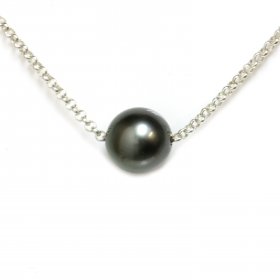

Vatea necklace

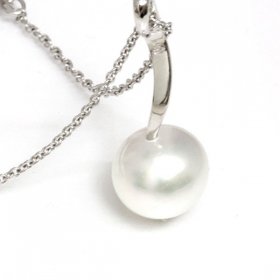
Tao gold pendant

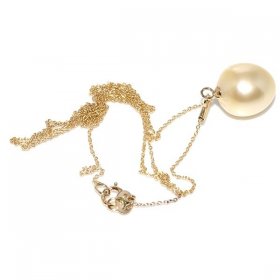
Tanoa gold pendant

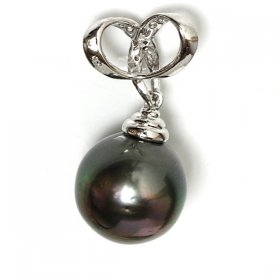
13mm Vaiena gold pendant

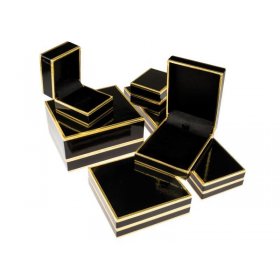
Gold pendant Vahi tahitian pearl
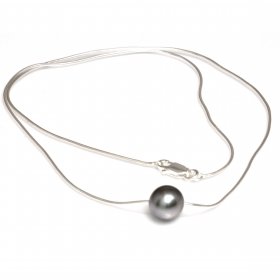

Torea necklace
Full Necklaces Collection

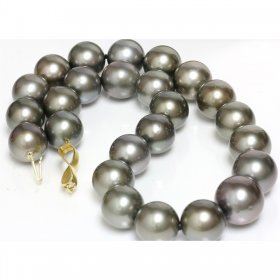
Hakio necklace 15-18mm
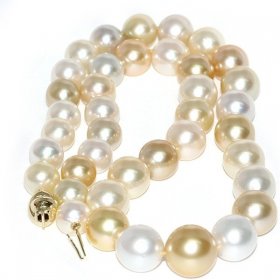

Naru necklace 9-13mm

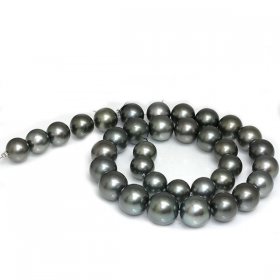
Collar 14-11mm AAA

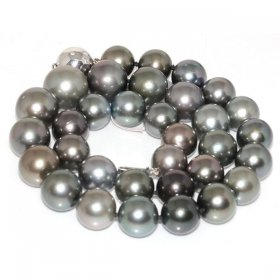
Haku necklace 12-15mm
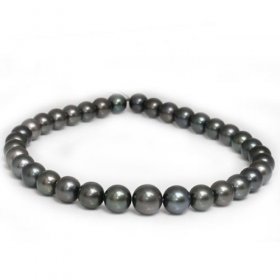

Round Linoa necklace

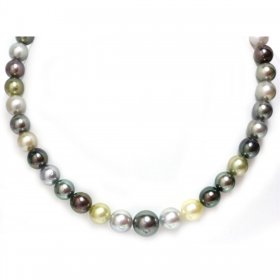
Maupiti necklace 10-13m
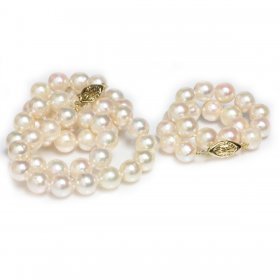

Noa Akoya necklace and bracelet
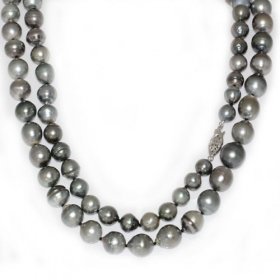

Baroque Nauri necklace
Rings Collection

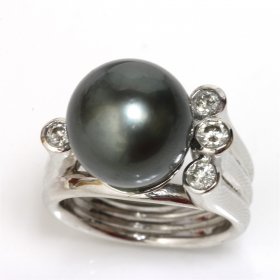
Vuia Ring

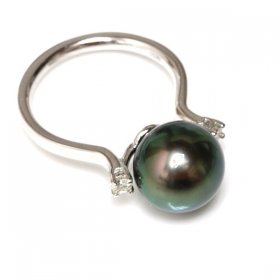
Tahitian Pearl Ring Laure

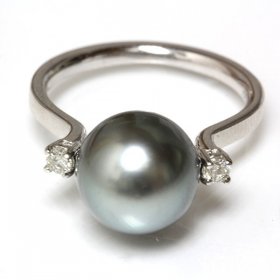
Laura Ring

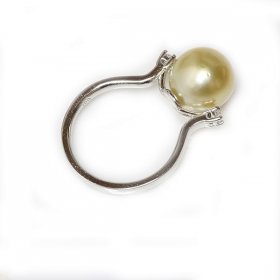

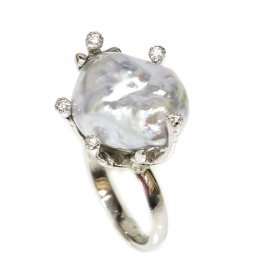
Naoa Ring

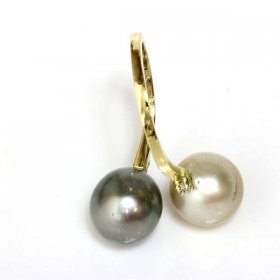
Bora Ring
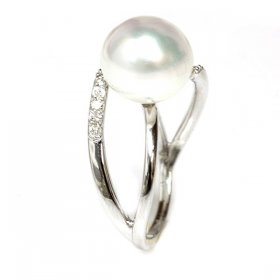

Maheva Ring
